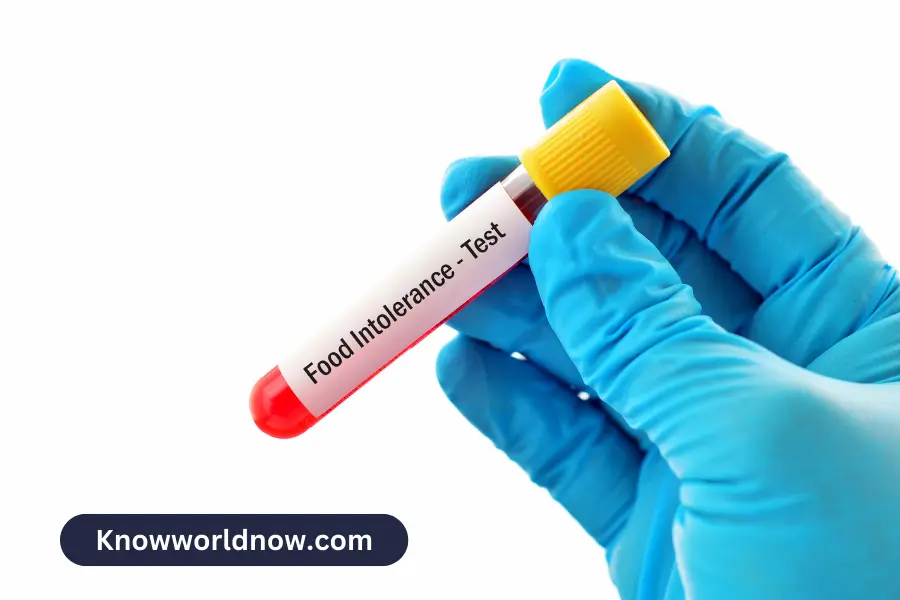Understanding Food Intolerance
Food intolerance is a condition that affects a significant number of people worldwide. It refers to the body’s inability to digest or metabolize certain types of food or food components.
Unlike food allergies, which involve the immune system, food intolerance is generally caused by the absence or deficiency of specific enzymes or the body’s inability to process certain substances.
When we consume food, our bodies break down the nutrients and components to extract energy and nourishment. However, for individuals with food intolerance, this process may be disrupted, leading to various discomforting symptoms.
Understanding food intolerance and its implications is crucial for those who experience adverse reactions to certain foods but do not have a true food allergy.
There are various tests for food intolerance, albeit their precision and dependability can differ. These tests could entail checking blood samples for antibodies or other indicators, or they might involve skin-prick testing to look for reactions to particular foods.
It’s crucial to remember that these tests may not be accurate and may not give a complete picture of a person’s food sensitivities.
It’s also important to keep in mind that as the immune system and digestive system of the body alter, food intolerances might grow over time.
One typical dietary intolerance that might appear in people who previously had no trouble digesting dairy products is lactose intolerance.
Food intolerances can have ties to underlying medical issues or microbiome imbalances, which can make diagnosis and treatment more challenging.
The Difference Between Food Intolerance and Food Allergy
Are “food intolerance” and “food allergy” terms confusing to you? These two terms are not interchangeable, despite the fact that many people do. Both disorders can be uncomfortable and have unpleasant symptoms, but their underlying causes and available cures are distinct.
Contrary to popular belief, food allergies and food intolerance are very distinct. While an intolerance typically results from a digestive system problem rather than an immune system reaction, an allergy involves an immunological reaction to a particular food protein.
Symptoms of Food Intolerance
The symptoms of food intolerance may not appear immediately after consuming the problematic food, as they can take hours or even days to manifest.
The symptoms can vary depending on the type of food that triggers them and the person’s sensitivity to the food. Some common symptoms of food intolerance include:
- Bloating
- Gas
- Diarrhea
- Abdominal pain
- Nausea
- Headaches
- Fatigue
- Irritability
- Skin rash or eczema
Causes of Food Intolerance
Genetics and Food Intolerance
Some people are genetically predisposed to be intolerant to certain foods. For example, lactose intolerance is more common in people of certain ethnic backgrounds.
Age and Food Intolerance
Food intolerance can also develop with age as your digestive system changes. Some adults might find they can no longer tolerate foods they enjoyed in their youth.
Digestive System Disorders
Certain digestive conditions like irritable bowel syndrome (IBS) or celiac disease can lead to food intolerance.
What is Food Allergy?
Food allergy is a condition where a person’s immune system mistakenly identifies a harmless food protein as a harmful invader and produces antibodies to fight it. This immune response can cause a range of symptoms, from mild to severe, and can even be life-threatening in some cases.
Symptoms of Food Allergy
Food allergy symptoms can range from mild to severe and may appear within minutes to hours after consuming the problematic food. Some common symptoms of food allergy include:
- Hives or skin rash
- Itching or swelling of the lips, tongue, or throat
- Difficulty breathing or shortness of breath
- Abdominal pain, diarrhea, or vomiting
- Dizziness or fainting
- Anaphylaxis (a severe, life-threatening allergic reaction)
Causes of Food Allergy
Food allergy is caused by an immune system response to a specific protein in food. Some of the most common food allergens include:
- Milk
- Eggs
- Peanuts
- Tree nuts (such as almonds, cashews, and walnuts)
- Soy
- Wheat
- Fish
- Shellfish
How to Test for Food Intolerance
There are several methods for food intolerance testing, including elimination diets, food diary, and blood tests. Here, we will discuss the most common methods in detail.
Elimination Diet
An elimination diet entails gradually reintroducing particular items into your diet after being absent from them for a while—typically a few weeks—to evaluate if symptoms persist. Healthcare experts frequently suggest this approach because it is affordable and simple to use.
You must determine the foods that are most likely to be the source of your symptoms before you can begin an elimination diet. Dairy, wheat, soy, and eggs are frequent offenders.
Once the foods have been identified, cut them out of your diet for at least two weeks. After this time, reintroduce one food at a time carefully while keeping an eye on your symptoms.
Food Diary
In a food diary, you record every meal you consume as well as any symptoms you may have over a period of time, often two to four weeks. Using this strategy, it may be possible to spot trends and potential food intolerance triggers.
Simply note everything you eat and drink, together with any symptoms you feel, their severity, and when they occur, to start a food diary. You might start to see trends over time and figure out which foods are contributing to your symptoms.
Blood Tests
Food intolerance testing can also be evaluated via blood tests. The IgG test, which assesses the quantity of antibodies in your blood that respond to particular foods, is the most typical form of blood test.
An IgG test involves taking a sample of your blood and sending it to a lab for evaluation. Your blood is then examined in the lab for IgG antibodies to particular meals. The findings will reveal which foods you react to the most.
Conclusion
Managing a food intolerance can be difficult, but pinpointing the exact foods that make your symptoms worse can be a big step in bettering your quality of life and managing your illness.
Elimination diets, food diaries, and blood tests are only a few of the testing techniques available; each has benefits and drawbacks. Consult with your healthcare physician about the most appropriate testing procedure if you think you might have a food intolerance.
How to Test for Food Intolerance is a crucial step towards managing your symptoms and living a healthier life. By identifying the specific foods that trigger your symptoms, you can make informed decisions about what to eat and avoid, and take control of your health.







